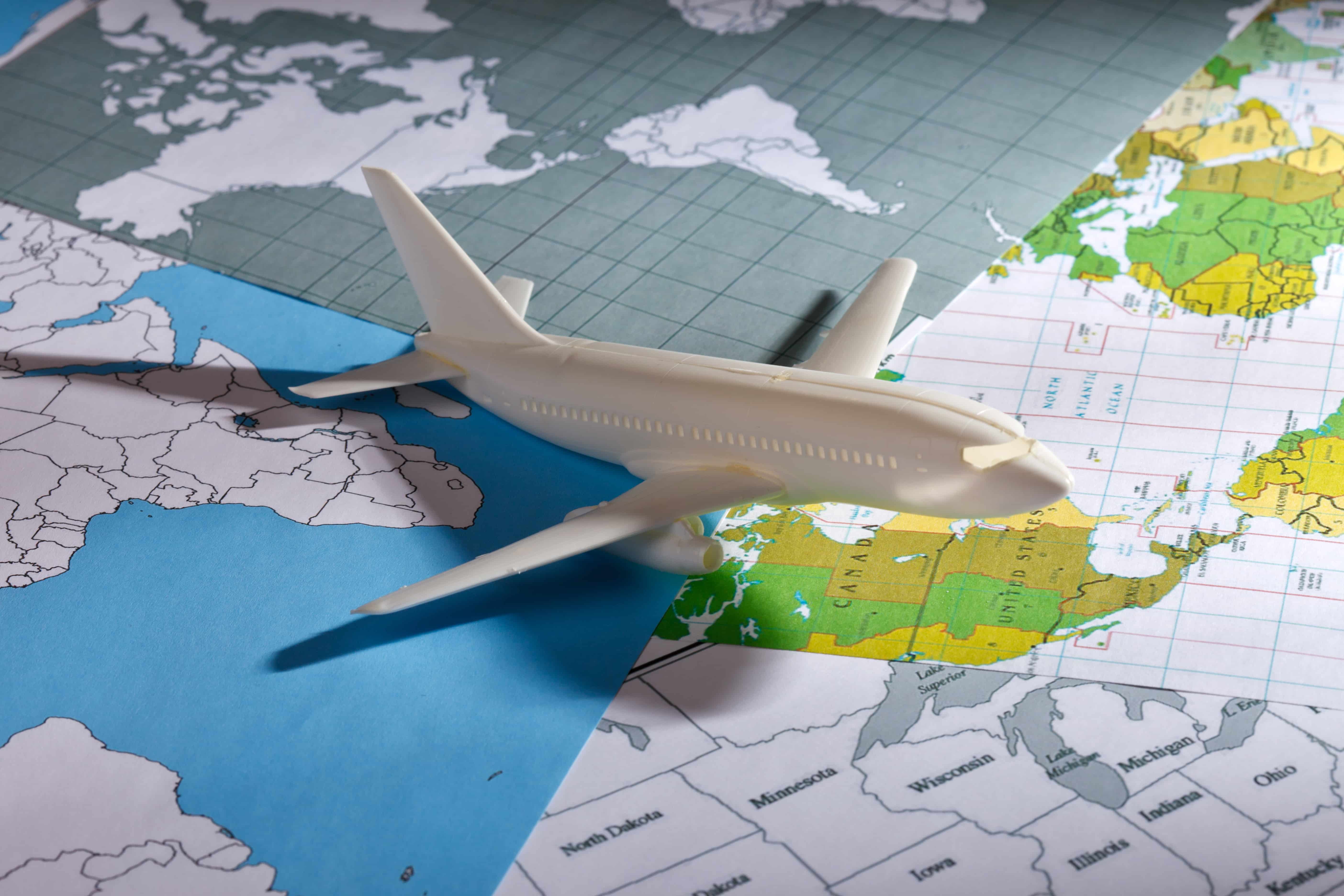Predictive analytics is having its heyday currently. It has emerged as the technology that firms are turning to in order to gain competitive advantage and provide fact-based assessments of what will happen in the future in the industry.
The increase in the use of predictive analytics takes root in the surge of big data and the revelations that such large datasets offer to further business goals. Tougher economic conditions are also leading firms to up their game to be set apart from the competition. This has influenced the surge of predictive analytics into fields outside of pure-play technology and into the purview of large-scale businesses. One such player is the travel and tourism industry.
Travel Industry Boom
In 2018, travel and tourism was the second-fastest-growing sector, adding $8.8 trillion to the world’s GDP and 319 million mint-new jobs. People are travelling a lot more, and factors like social media and extended media coverage are increasing the reach to even the farthest corners of the world. As a result of this heightened awareness, there has been a veritable boom in various facets of the travel industry.
Technology and big data have been crucial players in this boom. Travel technology has seen its best decade so far, as have traditional players. Digital innovation and emerging technologies have helped entirely new segments to enter and revolutionise the travel market – from accommodation brands to solo travelling agencies and everything in between. Here are a few changes that have come about as a result of this travel boom:
- ‘Offbeat’ experiences: Globally-popular travel destinations have had to make way for rising stars that have climbed swiftly up the travel charts thanks to word of mouth and the need for off-the-wall experiences.
- Increased international travel: Domestic travel has enjoyed its heyday but, over the last decade, the focus has turned to international travel and cross-global tourism, fuelled by affordable airfare and expanding hotel chains.
- More budget options: Understanding the demographics of new travellers and their price points, the last decade has seen an influx of budget accommodation, shared-ride facilities, private homestay brands and more.
In a circular fashion, each of these facets influences the other; the resulting economy is one that sees increased travel and, consequently, a snowballing influx of big data that could provide insights to set brands apart.
Learn the difference between business analyst and data scientist.
What parameters of the travel industry need to be predicted?
Predicting the future is all about finding needles in a veritable haystack of big data. Machine learning is one of the few technologies capable of mining truckloads of information to find revelatory insights– this makes it a boon for the travel industry as well. Predictive analytics, in particular, is the process by which hidden patterns are unveiled from sifting through large datasets already at firms’ disposal.
Some Parameters in the Travel Industry that benefit from Predictive Analytics
Recommendation Engines for upselling and cross-selling
Personalisation and enhanced user interactions are at the crux of travel booking experiences today. Recommendation systems increase the value a firm can by providing customers with appropriate recommendations as well as by upselling and cross-selling services. For example, a budget traveller looking for cheap flights is more likely to be swayed by recommendations of budget hotels than a luxury traveller. With predictive analytics, firms can understand user behaviour and recommend relevant products that, in turn, can drive sales and increase revenue.
Sentiment Analysis of Social Media Posts
The rising role of social media in influencing travel habits and destinations also makes it a key powerhouse of travel-related insights. However, monitoring social networks is a mammoth task that cannot be undertaken by human efforts– millions of travel reviews, photographs, recommendations and itineraries are posted every day. Predictive analytics allow firms to understand the polarity of these posts– whether they’re positive, negative or neutral. It can also help understand the general behaviour of a user demographic, the experiences target audiences prefer and what they would most likely want from their travel agency, hotel, air carrier or other travel providers.
Optimising pricing strategies
As more players inundate the market, hotel and travel businesses are turning to predictive analytics to identify the optimum price for their hotel rooms, airfare and other services that will keep them competitive while also satisfying customers. These algorithms also factor in influential considerations such as industry trends, travel seasons, popular destinations, timings and demand. Higher volumes of customer data make finding these insights easier and more accurate. Plus, integration with other technologies such as Travel APis that provides hotel and flight pricing data can be used for marketing and promotions increase revenue for travel business providers.
Constructing Traveller Experiences
With predictive analytics, firms can leverage individual personalities and preferences to craft compelling packages that go beyond the choice of rooms or flight seats. A look into the future of using predictive analytics would seem something like this: gluten-free room menus to customers on a diet, promoting honeymoon packages to those nearing an engagement, offering budget flights and accommodation to students fresh out of school. In this manner, the approach transforms from responding to consumer need to anticipating them well in advance.
Extreme Customisation
In an analytics-driven travel industry, predictive analytics can be conjoined with in-depth customer testimonials and data to motivate purchases and loyalty through customisation. All-inclusive bundles, flexible travel and accommodation packages and choices of car rentals based on history and budgets are benefits that are just scratching the surface of what predictive analytics can result in.
The Biggest Companies using Predictive Analytics
As a testament to how much predictive analytics can revolutionise the travel industry, Expedia made huge investments in data analytics and visualisation in order to create personalised recommendations. They aimed to show information and results that are personalised and relevant even before the customer asks for it. They went about this by first collecting large amounts of data from their users, then categorising them to create buckets and a travel graph. This graph then floated the most relevant results at the top of search results whenever a user from the pre-defined buckets keyed in a search term (source).
Booking.com uses predictive analytics across departments, to serve different purposes. Changes made to products or offerings are tested through randomised controlled trials based on predictive analytics. When building products using data analytics, the firm also analyses how proposed models will impact data that will be collected going forward. They’ve also integrated their data analytics teams with marketing and product development to avoid creation of silos and encourage the collaborative building of better predictive models.
Companies Who are using Predictive Analytics & Case Studies
1. Fareboom.com
An online travel agency that operates worldwide, Fareboom.com has leveraged predictive analytics in their fare predictor tool. Its online travel booking website already contained millions of user data relating to flights, bookings and fare searches dating back several years. Using this as a base, a ‘self-learning algorithm’ was created to predict future flight fares based on factors such as:
Future Flight Fares based on these factors-
- Travel trends
- Seasonal trends
- Growth or reduction in demand
- Airline-centric special offers
- Festive or occasion-centric deals
2. Kayak
Kayak, the well-known travel booking provider, uses virtual travel assistants and Facebook Messenger to help customers plan their next trip. It does so by leveraging artificial intelligence and predictive data analytics to scour for recommended flights and accommodation.
3. Hipmunk
Hipmunk allows users to search flights from city A to city B through Slack, a popular cloud-based instant messaging platform. The integration of existing messenger apps into futuristic AI and ML-based technology is an indicator of how intelligent assistants, backed by predictive analytics and millions of user data, is the future of the travel industry.
4. 4site Tool
Cornerstone Information Systems built the 4site Tool geared at helping travellers sail smoothly through flight disruptions and delays caused by matters beyond their control. The opportunity for predictive analytics lies in forecasting travel disruptions based on available information like airport schedules, weather forecasts and ongoing delays. Such technology allows travellers to prepare contingency plans well in advance– such as booking different flights, arranging for accommodation at a new transfer point or book travel from a transfer point to a destination.
5. Qantas
Qantas, which is Australia’s largest airline carrier, uses a similar technology to mitigate losses that are inevitably caused by flight delays, disruptions and cancellations. It also improved the overall experience for travellers by reducing the number and length of delays that may have been caused due to:
- Excessive air traffic
- Unstable weather conditions
- Operational hiccups
It was statistically proven how well this predictive analytics-based system works– in 2016, when heavy storms battered Australia’s east coast, only 15 out of 436 flights were cancelled compared to competitor Virgin Australia, which saw 70 out of 320 flights being cancelled.
Predictive analytics allows businesses to take the wheel to further their business goals rather than react passively to industry trends and circumstances after they occur. Although it seems like sorcery to those who are unaware of the workings, predictive analytics is the veritable gateway to revelatory insights that can transform even the smallest firm into a titan of the industry. Check out Courses on Data Analytics to upskill in this domain.










